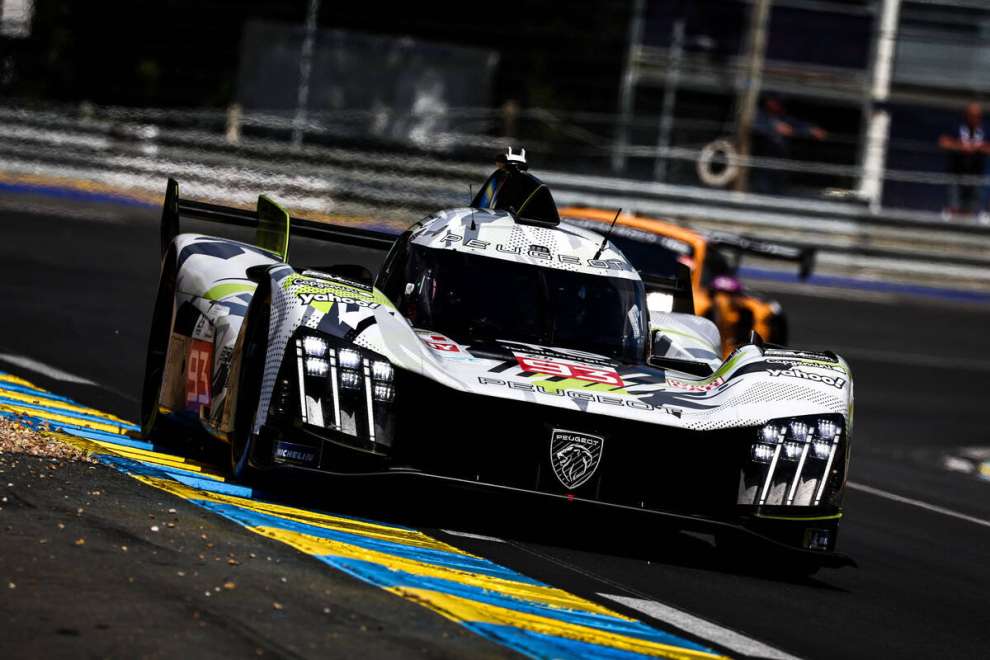By Carlo Platella
Both cars outside the top-10 two laps from the top, 2.2 seconds behind the fastest lap of the race and a last-ditch defeat suffered by the debuting Lamborghini. The cold numbers would suggest a disastrous outcome for Peugeot at the 24 Hours of Le Mans, but going beyond the disappointment of the moment, some positive signs can still be seen. Even if a year ago the wingless Hypercar achieved a better result in France, the renewed 9X8 in fact promises greater potential for the future.
Starting from scratch
The severe verdict of the checkered flag sanctioned the exclusion of the two Peugeots from the points zone, but it must be appropriately contextualised. The top-10 was almost entirely the prerogative of Toyota, Ferrari, Porsche and Cadillac, all manufacturers with greater experience than the last edition. The lion, on the other hand, started from a blank sheet of paperdeveloping a 2.0 version of the 9X8 whose debut dates back to less than two months ago in Imola, not yet exploited due to an incomplete understanding of the new package.
“Compared to last year we have changed our package profoundly, so all the setup and optimization for this track is different,” technical director Olivier Jansonnie explained on the eve. “During the tests we had to relearn everything”. While Peugeot started from a new project, the competition grew in competitiveness, reliability and in number. For example, the ranks of Porsche have been strengthened with new cars, which unlike 2023 had no difficulty seeing the finish line, free from reliability problems. The abundance of opposing cars had the effect of making Peugeot pay more with the result the delay from the four leading manufacturers. For the lion, however, the relative delay in terms of positions is not relevant, but rather the absolute delay on the stopwatch is.
Targeted work
Another positive aspect for Peugeot is the awareness of knowing where to intervene. At the moment the 9X8 suffers from high-speed cornerswhere the car loses load and balance due to variations in height from the ground while driving. “Where we struggled a little more is in the Porsche corners, where with the fluctuations in ground clearance we lose a little stability, balance and confidence. It’s an area where we need to improve.” Vandoorne’s confirmation.
This is a problem masked by the old 9X8 concept, which featured wider front tires and enjoyed a balance shifted towards the front. The April updates have partly sacrificed competitiveness in fast racing, exposing the difficulties in managing heights from the ground, while gaining traction. From this point of view, Le Mans, a track dominated by fast corners, represented the worst case scenario for a team still intent on studying a solution to the problem, while the next race in Sao Paulo could already meet the needs of the new 9X8.

Potential to be extracted
If there is still work to be done on the curves, on the straights at Le Mans instead Peugeot showed good aerodynamic efficiency. In terms of resistance, the 9X8 is halfway between the super-fast Ferrari and the Toyota, which instead enjoys abundant aerodynamic downforce, denoting a good compromise, useful above all from the perspective of an entire season. In general however, the numbers in the wind tunnel highlight still untapped potential, as technical director Jansonnie explains: “We’re seeing some pretty interesting things. Some are better than we expectedothers not”. Jansonnie himself then revealed how Peugeot has not yet run out of development money, leaving the door open for new interventions on the car in the future. The chase to the top continues.
#Mans #Peugeot #hope #disappointment #Mans